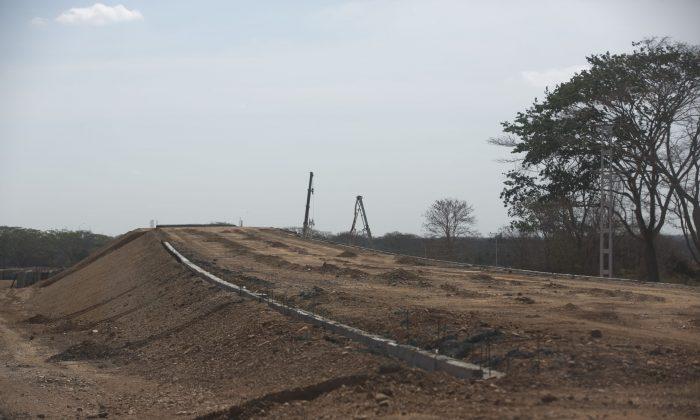Commentary
In Latin America, over-indebtedness and runaway public spending were business as usual before the pandemic. For decades, foreign funding for development projects came from multilateral institutions such as the World Bank—until China stepped in.
Seduced by generous loan terms, Venezuela, Argentina, Brazil, Ecuador, Bolivia, and other countries began cozying up to Beijing. Years later, with the pandemic decimating fiscal revenues, now they risk ending up in the pocket of the Chinese Communist Party.
In August, for example, a desperate Ecuadorian finance ministry struck a relief
deal with China to delay payments for a year and retain the same interest rate.
Between 2005 and 2018, China lent around $141 billion to 15 Latin American and Caribbean countries (
pdf), more than the combined loans from the World Bank, the Inter-American Development Bank, and the Latin American Development Bank. The largest Chinese creditors
are the state-run China Development Bank and the Export-Import Bank of China.
Even those who follow the trail of Chinese suitcase diplomacy cannot keep up, as governments often underreported the loans. According to
research by economists Carmen M. Reinhart, Sebastian Horn, and Christoph Trebesch, China has provided “about $1.5 trillion in direct loans and trade credits to more than 150 countries around the globe. This has turned China into the world’s largest official creditor.”
In Africa and Asia, a dozen countries owe at least
20 percent of their nominal GDP to the Chinese state and its subsidiaries. If they’re not careful, Latin American countries may one day find themselves in a similar position, scrambling to maintain sovereignty over key sectors such as oil, energy, mining, and telecommunications.
The Infrastructure Debt Trap
Assuming Latin American officials weren’t negligent, they signed loan agreements fully aware of the risks. They were perhaps more concerned with amassing votes from grandiose public works that launch hiring sprees, even if they later end up as
white elephants.
Constituents, however, have been oblivious, likely by design. Terms and conditions of Chinese loans are notoriously
opaque. They hide clauses that pledge the debtors’ natural resources and force local companies to hire Chinese workers and companies in infrastructure projects. This can facilitate corporate espionage and give Beijing power to decide which industries receive funds. Other deals involve shared-management agreements, such as the Brazilian infrastructure fund in which China has invested more than $20 billion.
Some are just bad deals. In Ecuador, officials
agreed to sell China oil in advance. Not only must the South American country deliver 300 million barrels to China through 2024, it has to pay around $3 billion in related expenses to Chinese companies. Ecuador could have obtained $3 or $4 more per barrel had it sold the oil on the open market instead, according to former Energy Minister Fernando Santos Alvite.
The hemorrhaging doesn’t stop there. Funds from the anticipated sale go through Chinese banks, which charge more fees before reaching Ecuador’s coffers.
The aforementioned conditions only make sense for a country in need of a lender of last resort. Historically, Latin American governments have dug their own graves, taking on more debt
without streamlining public expenditures and balancing the books.
A Walled Chinese Garden
The freewheeling loans are part of the ambitious Belt and Road Initiative (BRI) that China began in 2013 to increase its political clout around the world. Above all, Chinese leaders are set on
gaining a foothold in new markets they can study and eventually dominate.
Charles Tang, the director of the Brazil-China Commerce and Industry Chamber,
explained, “China is not Santa Claus: it wants to make business for its enterprises and also wants to develop political alliances with the majority of countries.”
This strategy can lead to supporting nondemocratic regimes. Chinese money, for instance, has been keeping Nicolás Maduro’s regime afloat in Venezuela for years. Venezuela owes China around
$20 billion, but its socialist economy has destroyed oil production and is increasingly unable to repay.
The Chinese regime
knows there’s no way out for the Venezuelan economy, but having a stake in the world’s largest oil reserves is the long-term goal.
The Dark Road to Prosperity
China
has consciously opted to lend money to developing countries with high-risk financial profiles. Eric Farnsworth, vice president of the Council of the Americas, argues that Beijing has sought to amass enough
bargaining power to impose its interests and pivot global governance away from the United States.
Using foreign aid as a soft-power tool is normal for major developed countries, but secrecy around Chinese loan terms
suggests a more nefarious strategy with projects that aren’t economically viable.
When Sri Lanka was unable to pay off its debt to Chinese companies in 2017, for instance, the country had to hand over a strategic port.
The early stages of projects might see strong initial investments from China, but the deficit widens in the long run as promised returns fail to materialize, according to
Kaho Yu, senior Asia analyst at Verisk Maplecroft.
The most indebted Latin American nations
have everything to lose. Besides mortgaging strategic industries, they’re putting their geopolitical interests on the line, not to mention the safety of workers. Chinese contractors have
offered poor labor conditions while ignoring environmental regulations.
Opaque loan contracts show the sole development China seeks is its own. Amid the trade war with the United States, indebted nations asking for restructuring are between a rock and a hard place.
The current financial crises in Ecuador, Argentina, and Venezuela show other nations what not to do. This includes borrowing from China, a totalitarian regime with no pretense of supporting democracy or human rights at home or abroad—hardly a system to revere and import via debt agreements.
Nevertheless, once cognizant of this rising problem, there is a foreign-policy opportunity here for the United States. The Trump administration can align with and support financially distressed nations who commit to fiscal discipline, the rule of law, and to containing Beijing’s influence in the region.
Paz Gómez, an Econ Americas policy analyst based in Ecuador, contributed to this article. Fergus Hodgson is the founder and executive editor of Latin American intelligence publication Econ Americas. He is also the roving editor of Gold Newsletter and a research associate with the Frontier Centre for Public Policy.
Views expressed in this article are opinions of the author and do not necessarily reflect the views of The Epoch Times.





